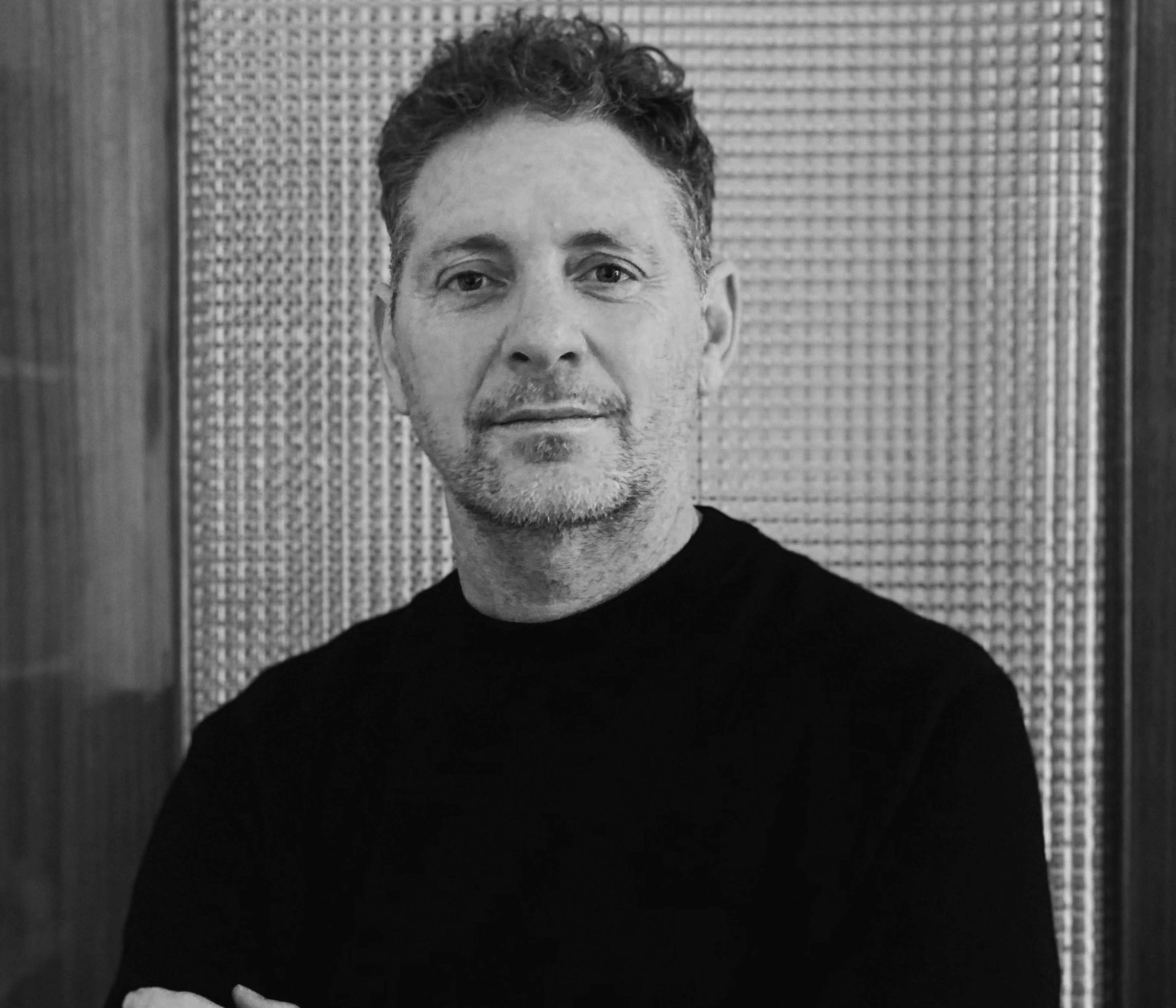Brook Andrew
Naarm/Melbourne
2023
Displayed 2023 at Campbelltown Arts Centre

Brook Andrew
Born 1970, Gadigal Country, Sydney
Lives and works Naarm/Melbourne
Brook Andrew is an Australian Wiradjuri/Celtic artist and writer. His interdisciplinary practice is driven by the collisions of intertwined narratives, often emerging from themes of the ‘Colonial Wuba (hole).’ His practice is grounded in his perspective as a Wiradjuri and Celtic person with matrilineal kinship from the kalar midday (land of the three rivers), Australia. Brook’s artworks, research, leadership roles, and curatorial projects challenge the limitations imposed by power structures, historical amnesia, and complicity, to centre and support Indigenous ways of being through systemic change and yindyamarra (respect, honour, go slow, and responsibility). Brook is Enterprise Professor, Interdisciplinary Practice and Director, Reimagining Museums and Collections at the University of Melbourne and is represented by Tolarno Galleries, Melbourne, Roslyn Oxley9 Gallery, Sydney, and Galerie Nathalie Obadia, Paris and Brussels. His studio is located in Melbourne, Australia on the lands of the Kulin Nations.
Photograph: Giacomo Sanzani
Artist text
by Budi Miller
‘Our ancestors are always present!’ was my first thought when walking through the rainforest with Brook Andrew, while my eye caught imprints of spirits in the nature around us. I have learned from the Balinese people how to see masks in nature, and to my amazement Brook could see them too! We were communing with the trees – an ancient language of intuition, images hiding in shadow, foliage, integument, and disfigured growth shaped by time. We were inspired. I had an impulse to create masks from the images of these forest offerings. When the wooden masks were finished by Balinese mask-maker Ida Bagus Alit, we knew that we had found our character TREE in Brook Andrew’s play GABAN (2022).
Brook Andrew is an interdisciplinary artist who has spent his career challenging what he calls the ‘Colonial Wuba,’ wuba meaning ‘hole’ in his community language, Wiradjuri. The hoarding of culture, the labelling, and the display of imposed meaning is the black hole of the British Museum. Brook questions and challenges the gaps of knowledge and the lies of institutional categorisation of art which attempt to erase human connection and cultural inheritance. The museums’ and art communities’ fetishes for cultural object authenticity and human remains contribute to the cognitive dissonance generated and indemnified in institutional spaces.
Is it not strange to hoard human remains for ornamentation?
Throughout our lives as Blak and Brown people, we have struggled for representation and reclamation of our cultural identities, but this has been obstructed by the colonial dominance of historical narratives imposed on our cultural artefacts, objects of power, and bodies, carried out by museums and financed by the public. GABAN means ‘strange’ in Wiradjuri language. It becomes a reflection on the illogical colonial power structures embedded in art. Brook Andrew has turned towards his community knowledge for healing, and offers GABAN as a site for healing. He embraces an awakening into a performance theory which he identifies as post-traumatic theatre.
How do we as Blak and Brown artists continue to evolve emotionally and spiritually when we have done the work of recognising inherited institutional trauma?
Brook has shown us that it is with and through his play GABAN; it is a rehearsal, a performance, a presentation, an exhibition, and a spectacle jostling between the ancestral knowledge of time and its numinous artefacts. This work navigates a pathway through the affects of the museum, and the traumas it continues to inflict on Indigenous bodies.
The story of GABAN is filtered through the lens of an Indigenous narrative revealing the lies of the institution of archival art through the voice of the oppressed. Memory is invoked. It heals and empowers the marginalised, while exposing and weakening the fragility of British logic. It is an entrance point for healing Blak and Brown bodies who are on their personal journeys of patching up the colonial holes excavated from the colonised parallax projected upon their cultures, psyches, and Ancestral lands.
Using the museum as a site-specific performance space viscerally exposes the colonial dominance sutured within institutional and public spaces. The GABAN, or the strange, is a Queering practice disrupting the senses. Powerful objects and institutional concepts are enacted by Blak and Brown bodies. The semiotics are as jarring and disconcerting as acid poured on a polaroid photo. The audience’s senses are awakened by hearing and seeing representation physically embodied. Brook reveals the unspoken habits of the colonial gaze, challenging the way we view art.
What happens when concepts of power and objects of conquest take on human forms as an animistic ritual performed by the souls of the abstract and intimate?
GABAN is an open-ended question. GABAN is an exploit, a reclamation of Indigenous ways of being, and encompasses the cosmic inheritance of human time.
Artist's acknowledgements
Brook Andrew is represented by Roslyn Oxley9 Gallery, Sydney; Tolarno Galleries, Melbourne and Galerie Nathalie Obadia, Paris and Brussels.
This project has been assisted by the Australian Government through the Australia Council, its arts funding and advisory body. Additional funding was also provided by the Australian Research Council Special Research Initiative ‘More than a guulany (tree): Aboriginal knowledge systems’ at Monash University, and by the Art Gallery of New South Wales, Sydney. The video work GABAN (2022) was co-commissioned by the Martin-Gropius-Bau, Berlin, and Campbelltown Arts Centre, Sydney.
The artist thanks Jessica Neath and all the creatives who realised the performances for this video.
Berlin: Dena Abay, Oumou Aidara, Mouna Assali, Joni Barnard, Black Pearl, Kevin Bonono, Mohamed Boujarra, Aurélien Calpas, Layana Lachs, Mmakgosi Kgabi, Marque-Lin, Cammack Lindsey, Kameron Locke, Astan Meyer, Budi Miller, Savanna Morgan, Jota Ramos, Aaron Reeder, Céline Rodrigues Monteiro, Paschal Daantos Berry, Cherie Schweitzer, Magnus Rosengarten, and Gary Stewart.

